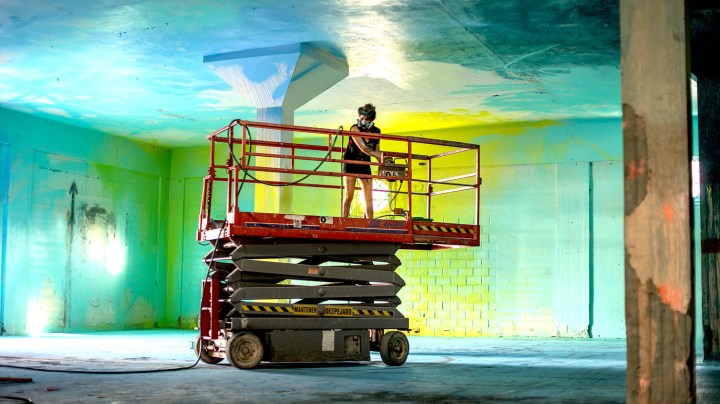Sofía Maldonado, Artist and Professor
After developing her career as a public space artist in New York City, Sofía Maldonado returned to Puerto Rico to educate and challenge the concept of art on the island. Maldonado opened her own studio practice, teaches at two universities, and most recently launched and administered alongside other artists Cromática, Caguas a Color—”a project that invades unused structures through color, abstraction, ephemeral art and community action,” she described calling from the streets of San Juan.
“I feel that in Puerto Rico I have more space to explore,” she continued, “I would’ve never been able to do a project like this in New York.” Inspired by similar work in Detroit and Berlin, the artist broke through the restrictions of city murals by creating Kalaña— a former tobacco factory transformed into a colorful, community space. Walls, roofs, floors— all were covered in art. Yet, the beautification was just the first part, Kalaña continues to serve as an educational hub with art workshops, documentary screenings, talks, concerts, and tours to the other art pieces. The project which started in August 15th ended on September 12th.

In San Juan, Maldonado continues to maintain strong ties with New York City. She hopes to exhibit photographs of Cromática at the MET gallery in Chelsea in 2016. Her team is also working on a documentary of the entire process starting with the conceptual talks. “I feel that sometimes the process is more important than the actual work,” she said. As a professor of the University of Puerto Rico, she also hopes to create an art symposium where established international artists talk with students, in order, to bring the dialogue Maldonado was exposed to in New York. “The creative people are the ones who educate the country,” Maldonado said, “that’s a very big task and we have to see it like that.”
